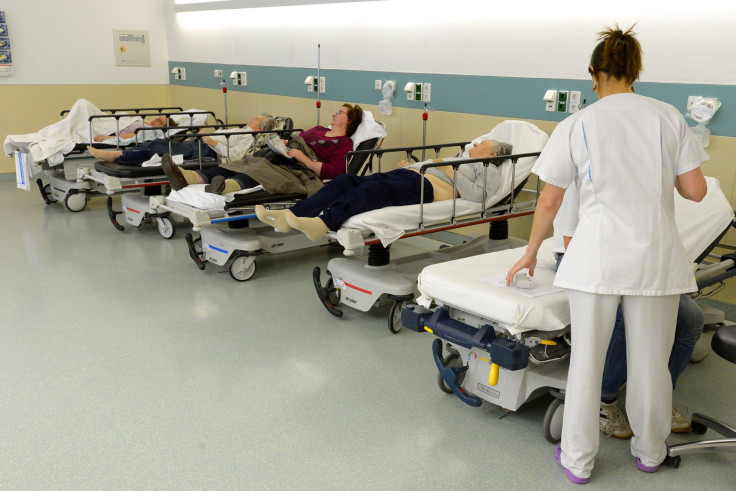What Is Necrotizing Fasciitis? Woman Contracts Flesh-Eating Disease After Flu Diagnosis

An Arizona woman remained in the hospital with a highly aggressive form of flesh-eating bacteria shortly after she received a flu diagnosis.
Christin Lipinski underwent treatment after doctors diagnosed her with the flu Jan. 11. She later complained of increased pain at the trauma center where doctors said she contracted a severe bacterial infection called necrotizing fasciitis. The disease started out as a simple infection, then advanced into a rare, intense, flesh-eating disease.
This progression is more common than one might think. An immune system weakened by the flu is said to be more susceptible to bacterial infections, Dr. Frank LoVecchio, an emergency room physician with Banner Health told KNXV, an ABC affiliate in Phoenix, on Monday.
"The flu doesn't cause necrotizing fasciitis," LoVecchio said. "...You're many, many thousands of times more likely to get the flu this year than necrotizing fasciitis once in your lifetime."
Lipinski’s suffered life-threating internal damage due to the bacteria. Doctors reportedly performed two surgeries that removed about 30 percent of the dead tissue caused by the infection. Lipinksi remains hospitalized in stable condition.
According to a GoFundMe created in her name, doctors anticipate a lengthy recovery for Lipinski as she will remain hospitalized for several months for precautionary reasons. She required several more procedures including skin grafts and reconstruction surgery.
As of Monday, Lipinski's GoFundMe raised $6,000 of her goal of $10,000. All donated funds will supplement Lipinski’s medical expenses, which her insurance never covered. It was uncertain when she would return to work.
Necrotizing faciitis can be deadly as the infection spreads quickly, according to the Centers for Disease Control and Preventions. The most effective way to combat the bacterium is appropriate antibacterial doses and surgery to extract all diseased tissue. The disease is non-contagious and can enter the skin through cuts. Fever chills, vomiting, ulcers, blisters black spots, and fatigue are all symptoms associated with the disease.
© Copyright IBTimes 2025. All rights reserved.





















